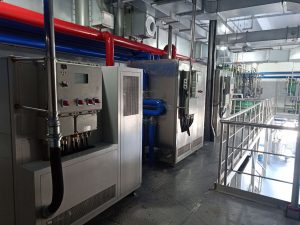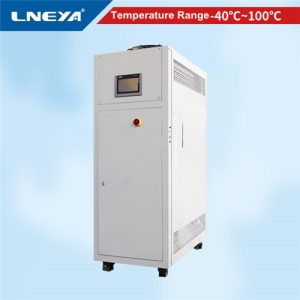Comparação de três métodos de ensaio para câmara de baixa temperatura
The method of guaranteeing the fluctuation of uniformity in high and low temperature test box is to adopt the wind circulation mode, in which the motor drives the fan to produce the wind circulation, thus forming the direction of wind speed. Non-forced air circulation test is a kind of test to simulate the influence of free air conditions, which is more suitable for the test of heat dissipation test samples. When forced air circulation is not used or test conditions are not guaranteed, forced air circulation can be used. One of the methods used in the test chamber is large enough to meet the test requirements without forced air circulation, but the required low temperature can not be maintained without forced air circulation in the chamber. Forced air circulation is required for refrigeration or heating of câmara de baixa temperatura.
2. Non-heat dissipation test samples and heat dissipation test samples
When the temperature of the test sample is stable during the conditional test period, the hottest spot temperature on the surface of the test sample is higher than the ambient atmospheric temperature by 5 degrees under the condition of free air, which is considered to be heat dissipation, whereas the non-heat dissipation test sample is considered to be heat dissipation. All the storage test and the test period without power or load, the test samples are non-heat dissipation test samples, the test using low temperature test method.
3. Non-heat dissipation test samples
Temperature gradient test of low temperature chamber(the former is a rapid temperature change test box and the latter is a cryogenic tester).
(1) Temperature gradient test: first, test samples with room temperature are put into the same room temperature test box. Then turn on the cold source to gradually cool the temperature in the box to the specified test temperature. If the test sample is too large or too heavy, or because of the complex functional test wiring, it can not be put into the cryogenic chamber without frosting in the catastrophe test, the test should also be used.
(2) Temperature catastrophe test: first adjust the temperature of the test chamber to the specified test temperature, and then put the test sample with room temperature. This test method is applicable when the known temperature abrupt change does not produce operation on the test sample.
Recomendações relacionadas
-
Contacto estreito entre os veículos de energia nova e as unidades de controlo da temperatura de ensaio das baterias LNEYA
2445Based on the current situation of energy issues and the booming development of the automotive industry, new energy vehicles are as timely as the modern automotive industry. The battery part of the new energy vehicle plays a decisive role in the pe...
Ver detalhes -
The role of temperature control system TCU in chemical and pharmaceutical reactor
2048The temperature control of the reaction kettle in drug research and development and chemical experiments, as well as the temperature control in small-scale experimental production and industrial production processes, require highly dynamic tempera...
Ver detalhes -
Precauções para a substituição do óleo de refrigeração no sistema de arrefecimento do carregador do veículo
1622O sistema de arrefecimento do carregador de bordo deve prestar atenção ao estado do óleo de refrigeração durante o funcionamento. Após o arranque do compressor, observar cuidadosamente as alterações da temperatura e da pressão do óleo. Se o óleo mudar...
Ver detalhes -
Desempenho da câmara de ensaio de humidade a alta e baixa temperatura
18591. Possui uma ampla gama de controlo de temperatura, que pode satisfazer as necessidades dos utilizadores. 2. Com um método único de controlo de temperatura equilibrado, com uma capacidade de aquecimento estável e equilibrada, pode ser efectuado um controlo de temperatura estável e de alta precisão.
Ver detalhes
 LNEYA Refrigeradores industriais Fabricante Fornecedor
LNEYA Refrigeradores industriais Fabricante Fornecedor













